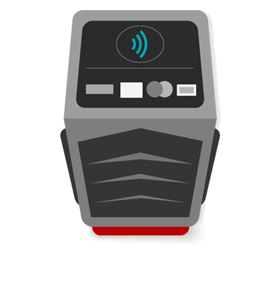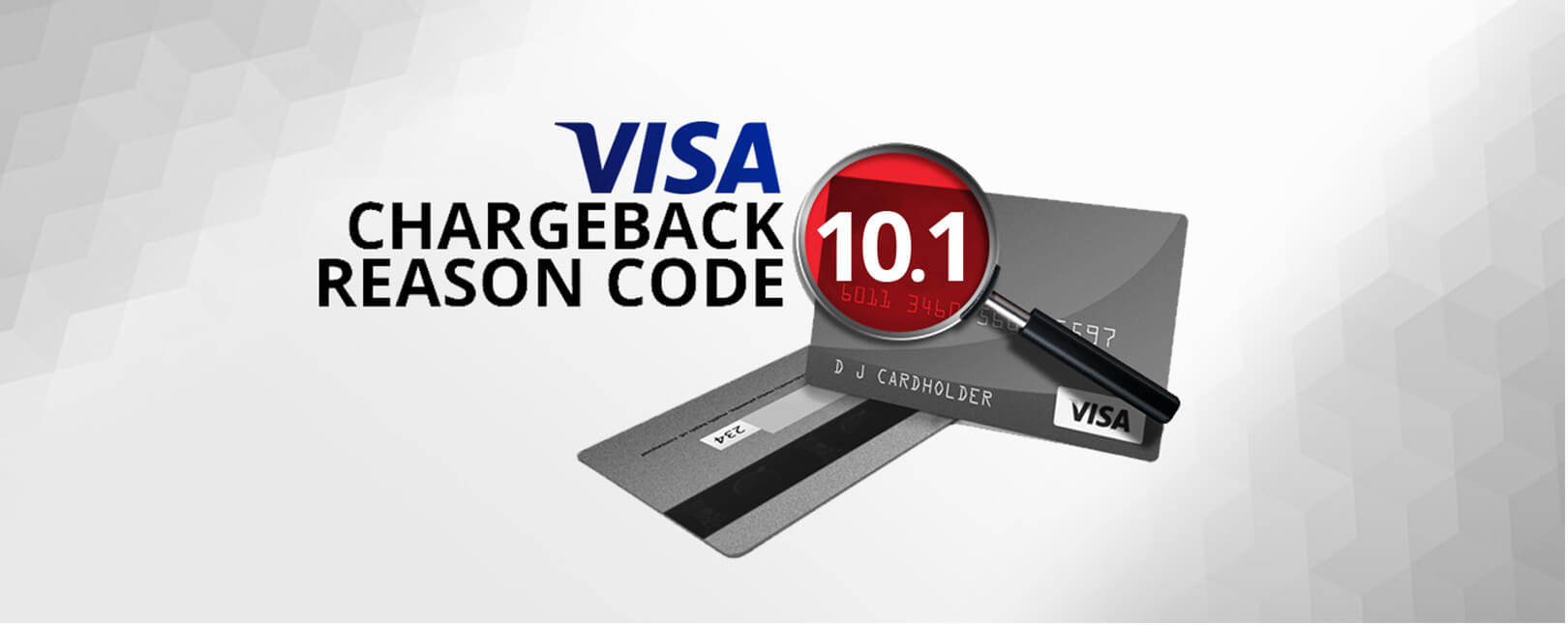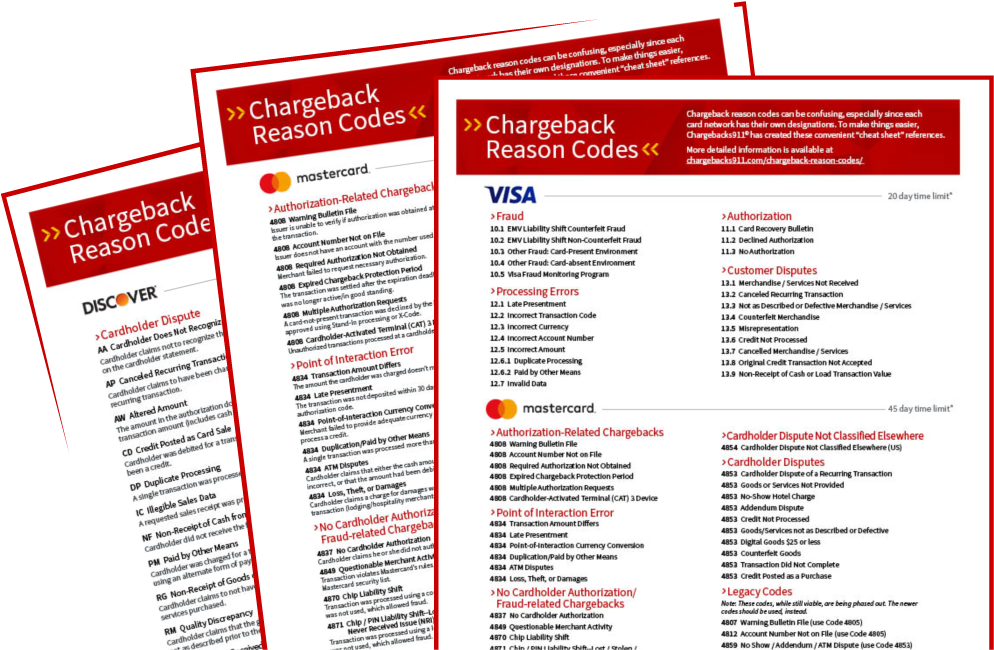Explaining Visa Reason Code 10.1: Counterfeit Fraud
The term "counterfeit fraud" refers to specific chargeback situations defined by Visa Reason Code 10.1. To be labeled with reason code 10.1, multiple conditions must be met:
- A merchant processes a transaction, and the transaction is approved.
- The transaction took place in a "card-present" environment using a counterfeit EMV (chip) card.
- The cardholder claims not to have participated in the transaction.
- At least ONE of these is true:
- Transaction wasn't handled using a chip-reading terminal; OR
- The transaction was chip-initiated, but the online authorization request to Visa didn’t contain all of the chip data.
Visa reason code 10.1 was designed to replace Code 62/Counterfeit Transaction. That seems pretty straightforward, but there's more going on under the surface. In this post, we'll take a closer look at how counterfeit fraud is being handled, and how that affects merchants.
Visa Chargeback Reason Code 10.1: In Detail
In general, the Visa reason codes are not hard to understand. For newcomers, the simplified code structure introduced this year with Visa Claims Resolution (or VCR) is even clearer.
Still, a few titles aren’t as self-explanatory as others. And, if you were already familiar with the older reason codes, you'll notice right away that the two structures don't precisely correlate: Visa didn't just renumber the existing codes, they changed many of them entirely. Visa reason code 10.1 is a perfect example.
In the legacy system, if cardholders didn’t participate in a card-present (or face-to-face) transaction, they could file a chargeback under reason code 62—Counterfeit Transaction. Banks would also sometimes use the more generic code 75: Transaction Not Recognized. "Transaction Not Recognized," however, could be interpreted in several different ways, which is why Visa eliminated it altogether.
The conditions for reason code 62 were like Visa chargeback reason code 10.1, but not identical:
- A merchant processes a transaction, which is approved.
- The transaction took place in a "card-present" environment.
- The cardholder claims not to have participated in the transaction.
The big difference here is that code 62 didn't specify anything about an EMV chip.
 Visa Reason Code 10.1 & the EMV Liability Shift
Visa Reason Code 10.1 & the EMV Liability Shift

To help understand this, let's take a quick look at EMV chip cards. Prior to their introduction, credit cards digitally stored data in a magnetic strip on the back of a physical card. Unfortunately, this meant the data was static: it never changed. That made it comparatively easy for thieves to swipe the info and use it in other places.
EMV chips, on the other hand, create a unique token—a code that can never be used again—for each transaction. Obviously, this is superior technology for fighting card-present fraud. The bad news: it's also EXPENSIVE technology. When it came to investing in new card readers, some merchants were dragging their feet. To incentivize them, the card schemes imposed a "liability shift” in 2015.
Before the shift, there was no sure way of knowing if a card was counterfeit at the time of transaction, so merchants weren't held accountable. The so-called liability shift changed that: now, if the merchant follows proper protocol and a counterfeit transaction slips through, they're still off the hook. But if a counterfeit transaction happens because a merchant doesn't have (or doesn't use) an EMV reader, the responsibility for the associated costs falls on the merchant.
In this way, Visa hoped to encourage merchants to invest in EMV card readers.
Causes for Counterfeit Transaction Chargebacks
It's important to understand that while all counterfeit transactions are fraud, not all transaction fraud involves a counterfeit card or account. There are only two reasons why a counterfeit transaction chargeback would occur:
- A physical card with a hacked EMV chip was used by a fraudster. This is possible, but altering a chip is exponentially more difficult than simply stealing magnetic code. As a result, this is rare.
- The card used in the transaction was counterfeit, but the EMV chip wasn't altered. That can happen in one of two ways:
- The transaction didn't happen through an EMV reader. In other words, the card data was entered via swiping or manual entry because the merchant didn't have or didn't use an EMV-enabled device.
- The transaction was chip-initiated but authorized online, and the merchant's card processor only transmitted partial chip data to Visa in the authorization request. [/checklist]
Disputing Reason Code 10.1 Chargebacks
As is the case with any fraud-related credit card chargeback, the representment options are limited.
If the merchant can provide documentation that the EMV chip was read—and that all of that data was transmitted to Visa—a reversal may be possible. You'll need evidence that the terminal was EMV PIN-compliant at the time, and show that you captured the cardholder's signature.
Or, if a credit or reversal for the transaction has already been processed, provide documentation of the that including the transaction amount and the date it was processed. If the authorization for the transaction was based on insufficient data, though, you should accept the chargeback.
Preventing Visa Chargeback Reason Code 10.1
Successful chargeback management must be approached from both sides: prevention and representment. Prevention is especially important if there are limited representment options, as is the case here. Fortunately, there are steps merchants can take to help prevent disputes from Visa chargeback reason code 10.1:
- Avoid credit card processing fallback options whenever possible. For example, a chip-and-PIN EMV card should not be swiped or key-entered unless absolutely necessary.
- Always make a manual imprint for key-entered transactions.
- Be sure the authorization is based on all the essential transaction data.
- Always check the credit card account information. The first four embossed digits of the credit card number should match the four digits printed below it.
- Check to see if the embossed account number matches what appears on the terminal after swiping or dipping the card.
- Blurry or uneven account numbers could mean the card has been tampered with.
- Carefully monitor self-checkout kiosks. These are prime opportunities for fraudsters to commit counterfeit transactions if employees aren’t checking card security features.
- Train employees to on how to perform a code 10 authorization request. A phone call, with yes-no questions, will help the employee detect potential fraud safely.
Get Help Managing Chargebacks
Determined fraudsters are everywhere. Newer and better technologies are constantly being developed, but criminals never seem to be more than a half-step behind. To protect their businesses, merchants have no choice but to remain vigilant.
Visa chargeback reason code 10.1 and other disputes are complex…but you don't have to fight it alone. Chargebacks911® can help. Contact us today to see exactly how much you can expect to save with a proactive chargeback management strategy.











